Uncategorized
Glass insulators Important details
A high-voltage Glass insulator is an element designed to support and insulate high-voltage electrical conductors in electrical energy distribution and transportation systems. It is composed of a tempered glass disc that can have different shapes depending on its function and specific application, to which a metal cap and pin are attached that allow the insulators to be joined forming insulator strings. These insulators are essential to maintain the integrity of the electrical system and prevent short circuits or electrical shocks.
- It is designed to withstand high voltages.
- It can have different shapes depending on its function.
- It is essential for the integrity of the electrical system.

High-voltage glass insulators have several key properties that make them suitable for use in high-voltage electrical systems. These characteristics include their high mechanical strength and electrical tension resistance, their ability to withstand adverse weather conditions, and their long-term durability. Additionally, their design and construction are optimized to ensure reliable performance and extended service life in demanding environments.
- Mechanical and electrical tension resistance.
- Ability to withstand adverse weather conditions.
- Long-term durability.

High-voltage glass insulators play a crucial role in making an electrical system operate safely and efficiently. They mechanically support conductor cables and act as insulation barriers between these conductors and supporting structures, preventing short circuits and electrical shocks that could cause interruptions in power supply or damage to equipment. Additionally, they help maintain network stability by minimizing current leakage and ensuring uniform electrical load distribution.
- They mechanically hold the conductors
- They prevent short circuits and electric shocks.
- They maintain the stability of the electrical system.
- They avoid interruptions in the energy supply.

When selecting high-voltage glass insulators, it is important to consider several factors to ensure their suitability and optimal performance in a specific electrical system. These factors include the required mechanical strength, the line voltage level, local environmental conditions, expected electrical load, and maintenance requirements. Additionally, compatibility with other system components and adherence to safety and quality standards are also important considerations during the selection process.
- Mechanical strength
- Line voltage
- Local environmental conditions
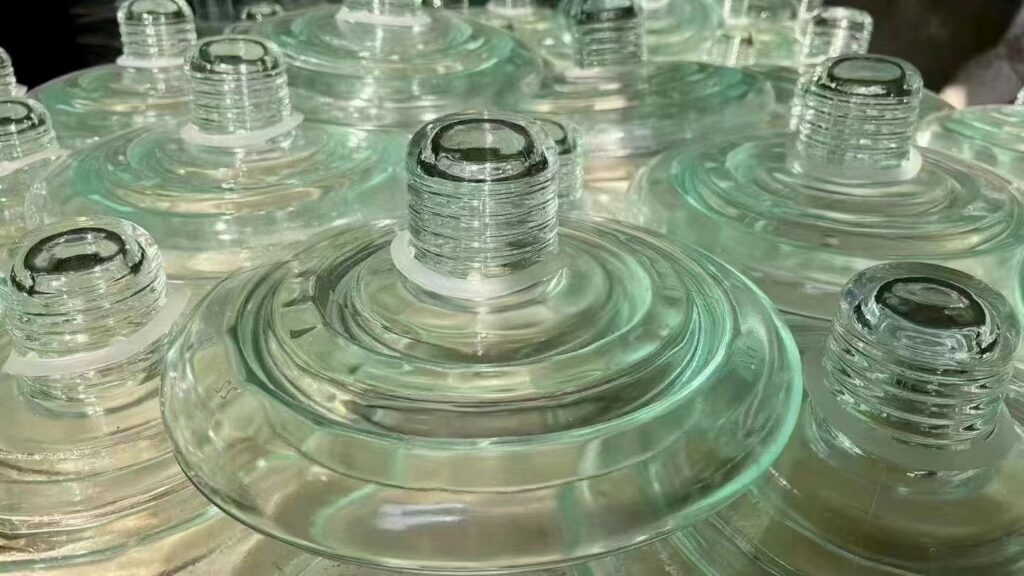
Each insulator model is defined by a series of parameters defined by the manufacturer and can be seen in the catalog or on the drawings of each insulator, and which must comply at least with the minimum or maximum values required by the different applicable standards The main parameters include the mechanical (mechanical breaking load), the dimensional (coupling standard, diameter, creepage distance, and pitch), the geometric (shape of the insulator profile) and the electrical ones (electric withstand voltages for a puncture, dry and wet power frequency, and lightning impulse withstand voltages). For each power line project, the required chain parameters must be properly calculated, and the most appropriate insulators must be chosen for each case.
- Mechanical parameters
- Electrical parameters
- Dimensional and geometric parameters
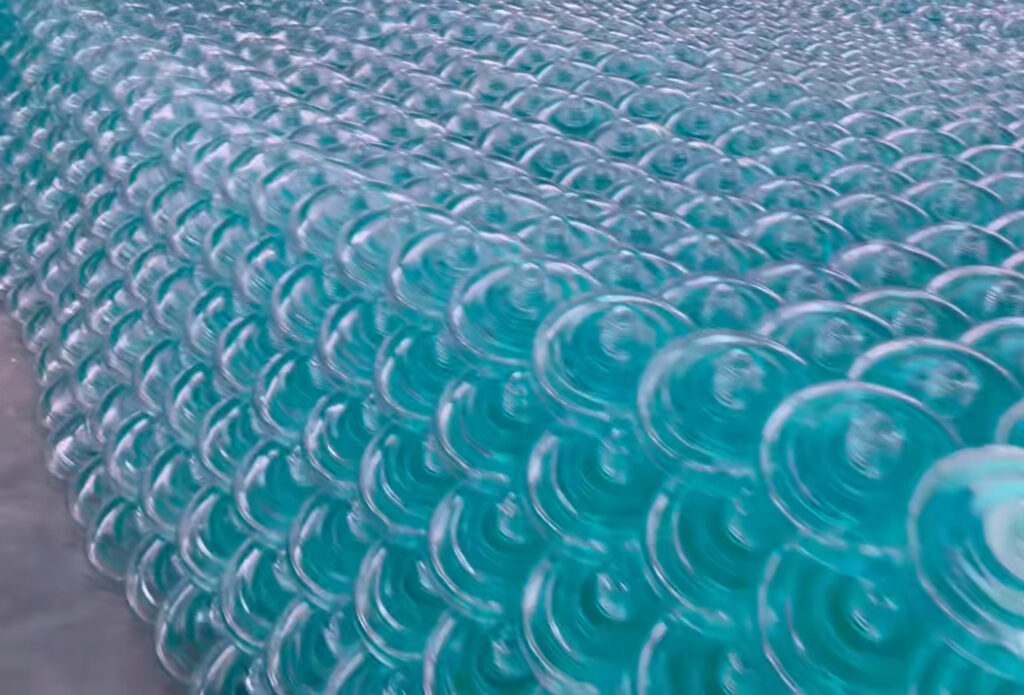
Proper installation and maintenance of high-voltage glass insulators are essential to ensure their optimal operation and prolong their lifespan. The installation process typically involves securely fastening the insulators to support structures using appropriate hardware and tools for the specific environment. Additionally, in highly polluted environments, regular inspection procedures should be followed to detect excessive contamination, and corrective measures should be taken as necessary to prevent premature failures.
- Secure fastening to support structures.
- Regular inspection to detect excessive contamination.
- Proper maintenance to prolong lifespan.
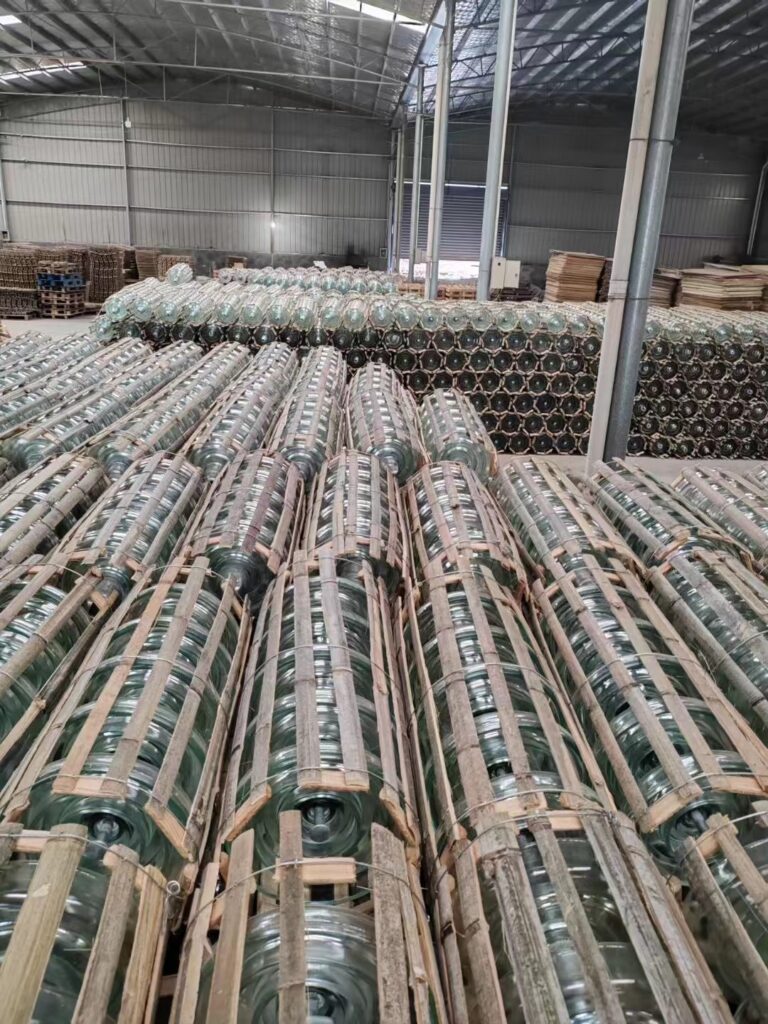
High voltage glass insulators are mainly made of high-quality tempered glass, which can withstand huge mechanical and thermal stresses, as well as high levels of electrical tension without damage.
In addition to glass, supplementary materials such as cast iron, forged steel, cement, and stainless steel are also used for fastening accessories. These materials are designed to withstand adverse environmental conditions and ensure the stability and durability of the insulator throughout its entire lifespan.
For highly polluted environments, Johnson Electric’s solution adds a thin layer of room temperature vulcanized (RTV) silicone on the glass surface of the insulator, endowing it with hydrophobicity and increasing its anti pollution performance advantage.
- High-quality tempered glass.
- The metal material of the accessories.
- Cement serves as a fastening element for components.
- Johnson’s RTV silicone coating for electrical insulators.
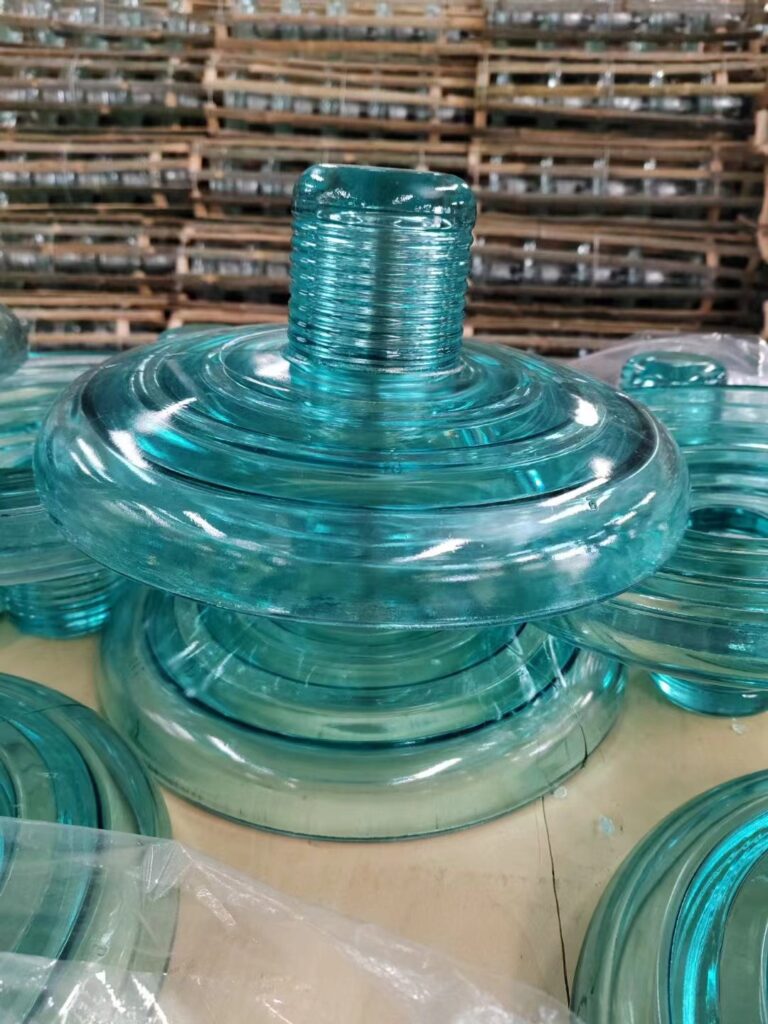
Contamination, such as the accumulation of salts, dust, or other natural or artificial elements, combined with moisture on the surface of glass insulators, can significantly affect their performance and effectiveness. This contamination can lead to a decrease in the dielectric strength of the insulator chain, increasing the risk of electrical arcs and shocks. On the other hand, excessive contamination without taking mitigation measures can potentially accelerate the aging of insulators due to corrosion.
- Decrease in the insulation capacity of the chains.
- Increased risk of electric arcs.
- Potential accelerated aging of insulators.
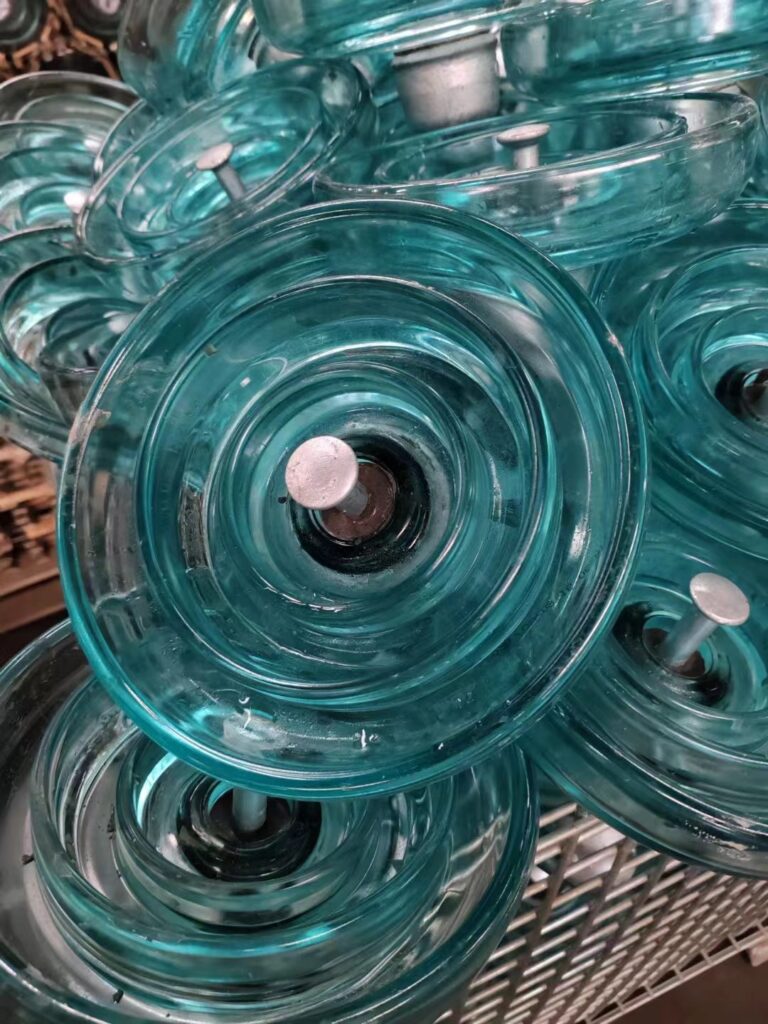
To mitigate the effects of pollution, several measures can be taken. First of all, the type of contamination that affects the line must be studied (sources, characteristics of the contaminant, etc.) and the severity of the pollution at the location must be determined. You must choose the appropriate insulator profile for each environment (standard, anti-pollution, aerodynamic…), design the chains with sufficient specific creepage distance. Also install adequate protection against corrosion (sacrificial zinc ring, standard or reinforced galvanization). And in extreme cases, minimize leakage current by applying RTV silicone creating a hydrophobic layer to the insulators.
- Analysis and study of contamination
- Proper selection of the profile of the insulators and the creepage line of the chains
- Protection against corrosion
- RTV silicone application
High voltage glass insulators are subject to specific standards or technical specifications that regulate their design, manufacturing and testing. These regulations may vary by country but are usually guided by the standards established by the International Electrotechnical Commission (IEC) or the American National Standards Institute (ANSI). These standards provide detailed guidelines on the quality requirements that insulators must meet to ensure their suitability and reliability in high voltage applications.
- Standards for design, manufacturing, and testing.
- International standards such as IEC and ANSI.
- Quality requirements.
In addition to glass insulators, there are porcelain insulators and polymer insulators.
Glass insulators, like porcelain ones, are cap and pin insulators or chain insulators that are coupled together to form insulator strings, whereas polymer insulators are single-piece elements.
The most important advantages of glass insulators over porcelain and composite or polymeric insulators are the following:
- Ease of visual inspection: A glass insulator, when it has a defect or is perforated, shatters completely, making it easily detectable with the naked eye from the ground without the need for expensive inspection systems. Even if an insulator shatters, both the mechanical and electrical properties of the insulator string remain almost intact (LGI guarantees a residual strength of the “insulator whose insulating part has shattered” of at least 80%, and the loss of leakage distance in the entire string is relatively small), so urgent action is usually not necessary. The insulator can be replaced later during the next scheduled maintenance operation. In any case, the annual rate of spontaneously shattered insulators is statistically very low with experienced and high-quality glass manufacturers, with less than 1 insulator shattered per 10,000 insulators in service.
- Greater durability: Glass insulators do not degrade and have a longer lifespan compared to others, especially polymer insulators. The lifespan of a glass insulator exceeds 50 years, often exceeding the expected lifespan of the electrical transmission line.
- High mechanical and electrical strength: Glass insulators are known for their higher mechanical and dielectric strength.
- Environmental advantages: Its longer lifespan, the fact that glass is a 100% recyclable material, and its manufacturing process having a lower environmental impact make glass insulators more sustainable than others.
- Greater ease of inspection
- Greater durability
- High mechanical and electrical strength
- Environmental advantages
The use of high voltage glass insulators can provide several environmental benefits compared to other types of insulators. For example, and unlike polymeric insulators, the expected useful life of a glass insulator is greater than 50 years, which usually exceeds the useful life of the line itself; This means that throughout the life of the line it is not necessary to renew the insulation, reducing the number of insulators that need to be manufactured and saving those associated resources.
On the other hand, glass is a recyclable material, which means that glass insulators at the end of their useful life can be recycled and reused instead of being disposed of in landfills. Additionally, glass insulators require fewer natural resources to manufacture compared to other materials such as porcelain, contributing to the conservation of natural resources and reducing the environmental impact associated with the production of electrical insulators.
- Longer lifespan than that of the line.
- Recyclable material.
- Lower consumption of natural resources.
- Reduction of environmental impact

